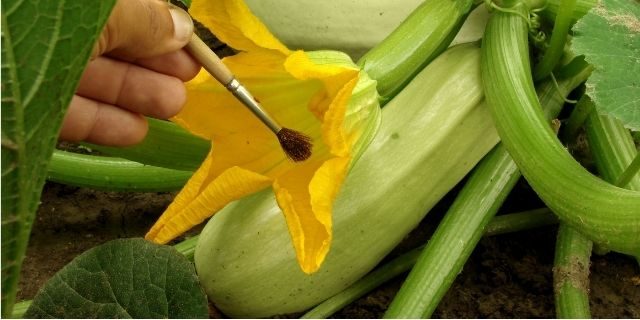24
Mar
Kenyan Farmers Are Resorting to Hand Pollination After Pesticide Use Kills Off Local Pollinators

(Beyond Pesticides, March 24, 2021) The worst predictions of scientists and advocates are playing out in the fields of eastern Kenya, as chemical-intensive farming there threatens the future of food production. According to Radio France Internationale (RFI), Kenyan farmers have resorted to pollinating their crops by hand after pesticide use killed off most of the pollinators they rely on. “We are mostly affected by pesticides because they have killed most pollinators which pollinate our crops—this has affected our food production compared to previous years,” said Joseph Mbithi, a farmer in Mbakoni village, Makueni County, Kenya to RFI.
Crop yields in the region have tapered off over the last two years, and farmers like Mr. Mbithi are pointing to pesticide use as the cause, citing past reliance on the herbicide Roundup (glyphosate) and the organophosphate insecticide malathion. “Pollinators such as bees and butterflies are not around due to chemicals which we spray in our farms,” he told RFI.
As a result, farmers are using toothbrushes and sponges as a substitute for the buzzing work of local pollinators. And it’s more complicated than one may think. ‘’The flowers are different in shape and are different in sizes. The male one is bigger than the female. When I am doing hand pollination, I normally pick pollen from the male first and then I apply to the female,” said Mr. Mbithi to RFI. “If there is no pollination most of them normally dry up,” he added.
Better late than never, farmers are now doing what they can to sustain the remaining pollinator populations. Samuel Nderitu, a farmer in Kiambu County, Kenya, told RFI that, with the help of trainees, he is able to pollinate roughly one hundred crops a day using brushes. But he is also planting flowers, and creating new pollinator habitat. ‘’We encourage crop diversity by growing different types of crops that will create a habitat for the pests and insects that will do pollination work,” said Mr. Nderitu, who told RFI it is vital to avoid using chemicals. “We feed the insects. You can also feed the birds and you know birds also do good work in pollination.”
This is sadly not the first place in the world to experience the local extirpation of pollinator populations. In the 2010s, many across the globe were shocked to see images of Chinese farmers in trees with jars of pollen and long brushes hand pollinating apple and pear blossoms. The cause was the same: as with the farmers in east Kenya, rampant pesticide use killed off native pollinators, leaving humans to perform the work. At first, labor costs were cheaper than importing pollinators, but over the years fruit yields have continued to decline while the price of labor increases—indicating that the practice is likely to be merely temporary fix, at best.
The answer to this issue is not a better pesticide the agrichemical industry claims is “safer”—or a new robot-bee technology, but an embrace of the natural world and the systems and processes that foster ecological health and stability. When agriculture works with nature, hazardous short-term solutions are rejected in favor of long term sustainability. Instead of employing toxic pesticides, a focus is placed on cultivating healthy soil to increase plant resiliency to pest and weed pressure. Diverse native species are planted in hedgerows and other non-crop areas help attract beneficial species that provide significant pest management.
If eastern Kenya provides a glimpse into the worst timeline, the natural beauty and grandeur of diverse organic farms provides a look into our best hope for a better future. Embrace organic at every level—in your backyard, the food you purchase, and in the advocacy you take to your elected officials. But even organic is threatened by the same unsustainable short-term thinking—necessitating constant vigilance. In order to keep organic as the better future we strive for, the standards themselves must be continuously improved upon. Help Beyond Pesticides stand up for organic integrity by providing public comment to the National Organic Standards Board by April 5. And for more information on how to protect pollinators where you live, see Beyond Pesticides Bee Protective webpage.
All unattributed positions and opinions in this piece are those of Beyond Pesticides.
Source: Radio France Internationale










